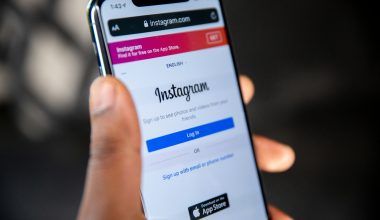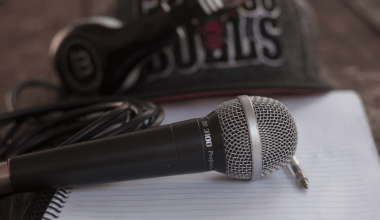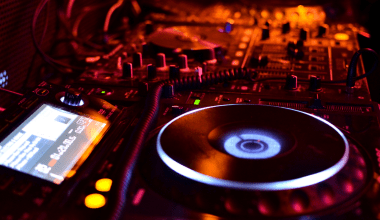Why Pricing Your Music Matters (music set price)
If you’re a musician, deciding how much to charge for your music can be tricky. You want your songs to reach more people, but you also need to earn enough to support your journey.(music set price) This is where setting the right music set price comes in.
In this guide, we’ll help you understand how to price your singles, albums, and even streaming tracks. You’ll learn how to balance affordability for your fans with earning enough for your hard work. Let’s dive in and keep it super simple!
What is a Music Set Price? (music set price)
A music set price is the amount you charge for your songs or albums. Whether you’re selling a single for ₹20 on iTunes or earning streaming royalties on Spotify, setting the right price is key. The perfect price makes your music accessible to listeners while giving you fair earnings.
Why Should You Care About Music Pricing?
Music pricing is about more than just money. It affects how people see you as an artist and how far your music can go. Here are some reasons to think carefully about your pricing:
- Earn More: Fair pricing helps you make money to invest in your music career.
- Grow Your Fans: Affordable pricing can attract more listeners.
- Stand Out: A well-thought-out price shows you’re a professional.
- Fit the Platform: Each platform has its own way of working, and pricing smartly can boost your visibility.
Things to Think About Before Setting Your Music Price
Before deciding how much to charge, keep these points in mind:
1. Your Costs (music set price)
How much did it cost to make your music? Think about:
- Studio recording
- Mixing and mastering
- Cover art or visuals
Make sure your price covers these expenses.
2. Your Listeners
Who is your audience? For example:
- Teenagers might prefer lower prices.
- Fans of niche genres might be willing to pay more.
Knowing your audience helps you set a price they’ll love.
3. Platform Rules
Different platforms have different price limits. For example:
- iTunes singles often cost ₹15–₹25.
- Streaming services like Spotify pay you per stream.
Check what works best for the platform you’re using.
4. Other Artists
Look at how much similar artists charge. If most albums in your genre cost ₹150, you can price yours similarly.
5. Music Format
- Digital Singles: Usually cheaper and sold per track.
- Albums: Higher-priced because they have more songs.
- Streaming: You earn based on plays.
How to Price Your Music on Streaming Platforms
Streaming platforms like Spotify, YouTube Music, and Apple Music work differently from download stores. Here’s how to make the most of them:
1. Understand Royalties
You earn money every time someone streams your song. On Spotify, artists get a fraction of a rupee per stream. To maximize this:
- Promote your music to get more streams.
- Choose a distributor like Deliver My Tune, which gives you up to 70% of royalties.
2. Add Extras for Fans
Some streaming platforms allow you to offer extras, like:
- Exclusive behind-the-scenes audio.
- Bonus live recordings.
These extras can make fans stream your music more.
3. Reach More People
Streaming is often free for listeners, so your goal is to reach as many people as possible. Share your Spotify or Apple Music links everywhere to increase your fan base.
Pricing Tips for Singles, Albums, and Licensing
Here’s how you can set prices for different types of music:
1. Singles
- Suggested Price: ₹15–₹25
- Why? Singles are easier to sell because they’re affordable.
- Tips: Make the cover art attractive, and add a short description to explain the story behind the song.
2. Albums
- Suggested Price: ₹100–₹200
- Why? Albums offer more value with multiple tracks.
- Tips: Add extras like a digital booklet or bonus song to justify the price.
3. Licensing Music
If someone wants to use your song in a movie, ad, or game:
- Typical Fees: ₹10,000 for small projects, up to ₹1,00,000 for big commercials.
- Tips: Research licensing fees in your genre to avoid underpricing.
How to Price Your Music on Different Platforms
Each platform works differently. Here’s a quick guide:
1. iTunes/Apple Music
- Price per single: ₹20
- Price per album: ₹150
- Make sure your music is professionally mastered to match their high standards.
2. Spotify
- Earn through streams, not upfront payments.
- Use tools like Spotify for Artists to track your streams and earnings.
3. Bandcamp
- Let fans choose their price, but set a minimum (e.g., ₹50).
- Offer physical goods like CDs or T-shirts to boost sales.
4. Deliver My Tune
- Distribute your music globally starting at ₹1999 for singles or ₹5999 for albums.
- Includes lifetime distribution, so you don’t pay repeatedly.
Creative Pricing Strategies to Try
Want to make your pricing even better? Try these ideas:
1. Discounts
Offer a limited-time discount during your album launch. For example, sell a ₹150 album for ₹120 for the first week.
2. Bundles
Pair your music with goodies like posters or exclusive videos. For instance:
- Album + Poster: ₹250
- Single + T-Shirt: ₹500
3. Pay-What-You-Want
Platforms like Bandcamp let fans pay more if they want to support you.
4. Subscriptions
Create a monthly plan where fans pay ₹100–₹500 for exclusive songs, early access, or live sessions.
Tools to Help You Price Your Music (music set price)
You don’t have to guess your prices. Use these tools to help:
- Cost Calculator: Add up all your expenses to know your minimum price.
- Fan Surveys: Ask your audience how much they’d pay.
- Music Analytics: Use data from platforms like Spotify to see which songs perform best.
Mistakes to Avoid When Setting Prices
Here are some common mistakes and how to avoid them:
- Pricing Too Low: You might lose money and undervalue your work.
- Pricing Too High: Fans might skip buying your music if it’s too expensive.
- Ignoring Your Audience: Always consider what your fans can afford.
Final Thoughts: Finding the Right Music Set Price
Pricing your music doesn’t have to be hard. By understanding your costs, fans, and the platform you’re using, you can set a music set price that works for everyone. Remember, pricing is part of your journey as an artist—it helps you grow your fan base and support your career.
Take your time, try different strategies, and don’t be afraid to adjust your prices based on feedback. After all, your music deserves to reach the world in the best way possible!
Related Articles:
For further reading, explore these related articles:
- The Ultimate Guide to DJ Work for Beginners
- How AI Song Lyrics Are Changing the Way We Make Music
- Unlock Your Creativity with Songwriting Idea
For additional resources on music marketing and distribution, visit Deliver My Tune.





